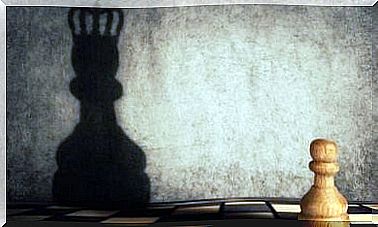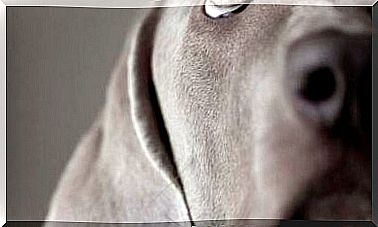Destructive Pride In Borderline Personality Disorder

Borderline personality disorder (abbreviated BPD from the English borderline personality disorder ) is a mental disorder characterized by many symptoms such as impulsivity, emotional instability, low self-esteem, and feelings of emptiness. However, other things, such as destructive pride, are not seen as clinical symptoms even though they are common.
People with borderline personality disorder tend to be very sensitive. In cases where most people would feel annoyed by that little negative experience, people with BPD can go through intense and devastating emotional pain.
In some cases, people with this condition will dress in a cloak of “false self-esteem” to protect themselves. While wearing this costume, however, they begin to believe that they have access to the absolute truth and that everyone else is wrong.
What really takes place under this cloak, however, is an intense fear that someone will hurt them with a different opinion or disagreement. This causes them to try to convince others that they are wrong. They will also be frustrated when they do not get to change someone’s perspective.
In other words, they simply cannot handle opinions that conflict with their own because they are unable to be flexible.
Because of this, the people around them will begin to believe that they see themselves as better than everyone else, as they try to impose their views on others in the world. Refusing to let others have their own opinions can easily push both family and friends away.

Where does this destructive pride come from?
These types of masks tend to hide wounds from the past, especially from childhood. People with BPD have often had a tragic childhood. For example, they may have felt that their parents did not care about them, they may have had to spend a lot of time alone, or they may have been criticized regularly.
Thus, they try to improve their sense of self-worth by looking down on others because this happened to themselves in childhood.
A child can adapt to critical circumstances in many ways. What we do know for sure is that some children try to overcompensate for their humiliation by wearing the mask of destructive pride. This is a way of projecting the idea that they will never let anyone hurt them again, without using words.
It is important that those suffering from BPD understand that the proud, hostile adult person they have become is nothing more than a wounded, lonely child. They must realize that anger will not help them heal their wounds.
What can you do with destructive pride in the present?
Understanding where destructive pride in BPD comes from is just the first step. To move past that, you have to work hard. Fortunately, there are some great strategists who can help you deal with destructive pride.
A common tactic that the BPD patient can benefit from is to ask acquaintances to send letters, emails or text messages. Here, however, we do not mean just any letter. They need to ask these people to tell them about the positive and negative traits they think they have.
A constant need for self-affirmation is always accompanied by an inability to actively listen to the opinions of others. Thus, it is this strategy that invites the person with borderline personality disorder to ask themselves some questions.
Examples of this could be things like “Isn’t it strange that five different people think the same about me?”, “Why am I not able to cope when someone has a different perspective than me?”, Or “What a positive lesson can I get out of this? ”.
The idea is that the BPD patient questions his absolute, rigid framework. From there, they can begin to realize that other people’s opinions are valid.

Making changes
The unexpected situations that arise in daily life are another great way to work through destructive pride. The goal of this is for you to become aware of the way your body and mind react (excitement, pondering, increased heart rate…) when someone criticizes you. Your next goal is to learn to wait a few minutes before responding.
Once you have achieved this, remember not to start a conversation with an aggressive or tense body language. You need to keep your face relaxed with a soft smile, while keeping eye contact without appearing intimidating. It is also best to avoid both moving your arms and legs too much, and talking too fast.
You can try to begin your sentences with things like “I think” or “in my opinion”. You can also try to find something you have in common by saying things like “I agree with you”. What you need to avoid, however, are sharp tones and interrupting others. Never ignore what others have to say, even if you do not agree with them.
If you have BPD and really do your best, you will begin to see how much your interactions with others change.









